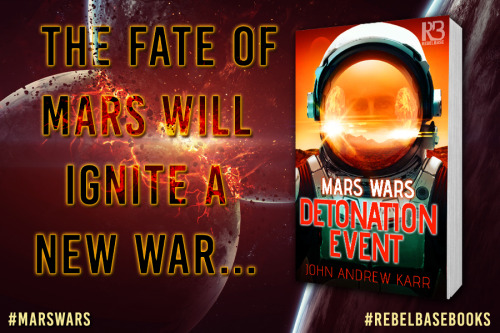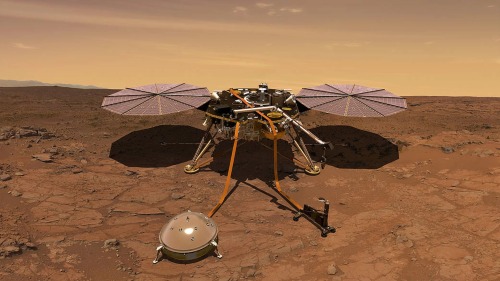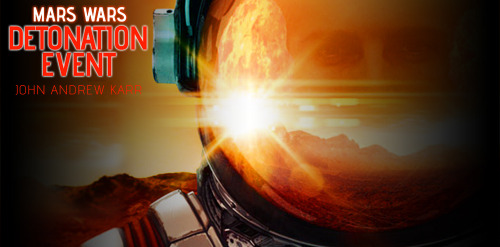The following is a guest blog by MARS WARS: DETONATION EVENT’s author @johnandrewkarr.

Beyond Earth.
Already it sounds whimsical. Adventures in space. Stuff for scientists and science fiction aficionados.
So many of us are so rooted in daily existence in our bubble that we forget or never fully grasp that Earth is just that—a rock in a bubble of air and water and heat.
And that bubble can easily be popped by an unwelcome asteroid.
Or the liquid and radioactive cores that churn and produce a protective magnetosphere around the planet go cold little by little over eons, or all at once. But in the end, go cold.
No more magnetosphere to ward off the surface-stripping solar winds. No method to prevent the escape of air and water and heat.
How long before Earth turns as barren and void of life as Mars is?
Not “appears to be.”
Is.
… unless there are underground caverns or something.
Unlikely, at best.

The NASA InSight lander, after another incredible flight and landing by scientists and engineers, is on a vast red plain called Elysium Planitia, with instruments to drill into the ground and rest on the surface to seek out and monitor tectonic activity.
They seek the pulse of Mars.
Judging by the lack of magnetosphere, I don’t believe they’ll find any.
Mars is a dead planet.
You need active cores to heat things up and outward, then have moving continental plates for there to be tectonic activity, a.k.a. marsquakes.
In my science fiction novel, Detonation Event,the first in the Mars Wars series, the opening mission is to resurrect the inner and outer cores with thermonuclear blasts. This allows for a magnetosphere, which in turn allows for the capture of air and water and heat, which then allows for the terraforming of Mars.
And human colonization without living inside domed cities or other encapsulated surface structures, or underground.
Artificial global warming is also an option to thicken the atmosphere so it doesn’t get pulled out into space.
Maybe we can smash asteroids into Mars to jump-start the cores.
None of this can happen now, or soon. But there’s always a first step.
And the InSight lander could be that first step.
You have to know current conditions to solve problems. Honest current conditions.

Detonation Eventoccurs two hundred years from now. Technologies have advanced so far in the last two hundred, who knows what the next two centuries will bring?
Last night I was jumping rope out on the back patio, gazing up at the red dot that is Mars in the western night sky. It was cold for Wilmington, NC; maybe thirty degrees.
So much colder and inhospitable on that red dot.
But as I wrote in my essay, The Case For Space, And Mars, humans need more than one planet to decrease the odds of extinction.
The moon could be a start, but it is not enough. It is not far enough, or large enough, for the next phase of human exploration and colonization.
That’s right.
Human.
We’re not there yet, but if we keep pushing, Mars may become less lethal to the average human being.
Because right now, humans and every other living thing on Earth are vulnerable.
Pre-Order/Buy MARS WARS: DETONATION EVENT here→ http://bit.ly/2GbEWmN
Posted 1 week ago | 2 notes | 0 Comments#Science Fiction#Science Fiction novel#Science Fiction inspiration#space.com#space travel#author guest post#writing inspiration#Rebel Base Books
